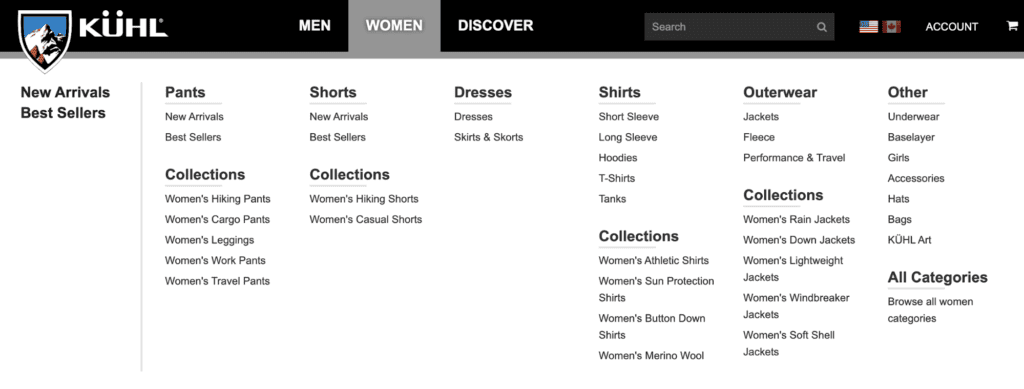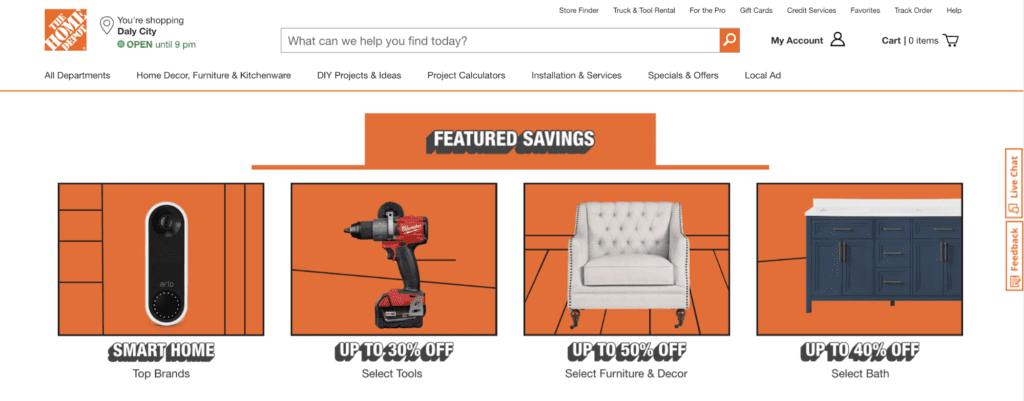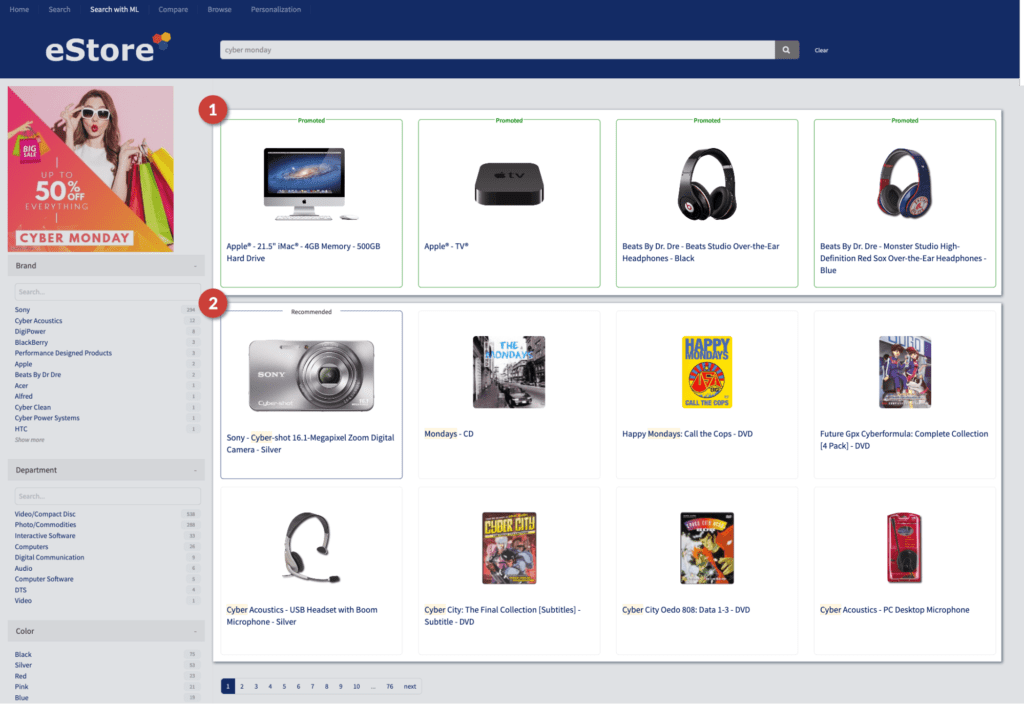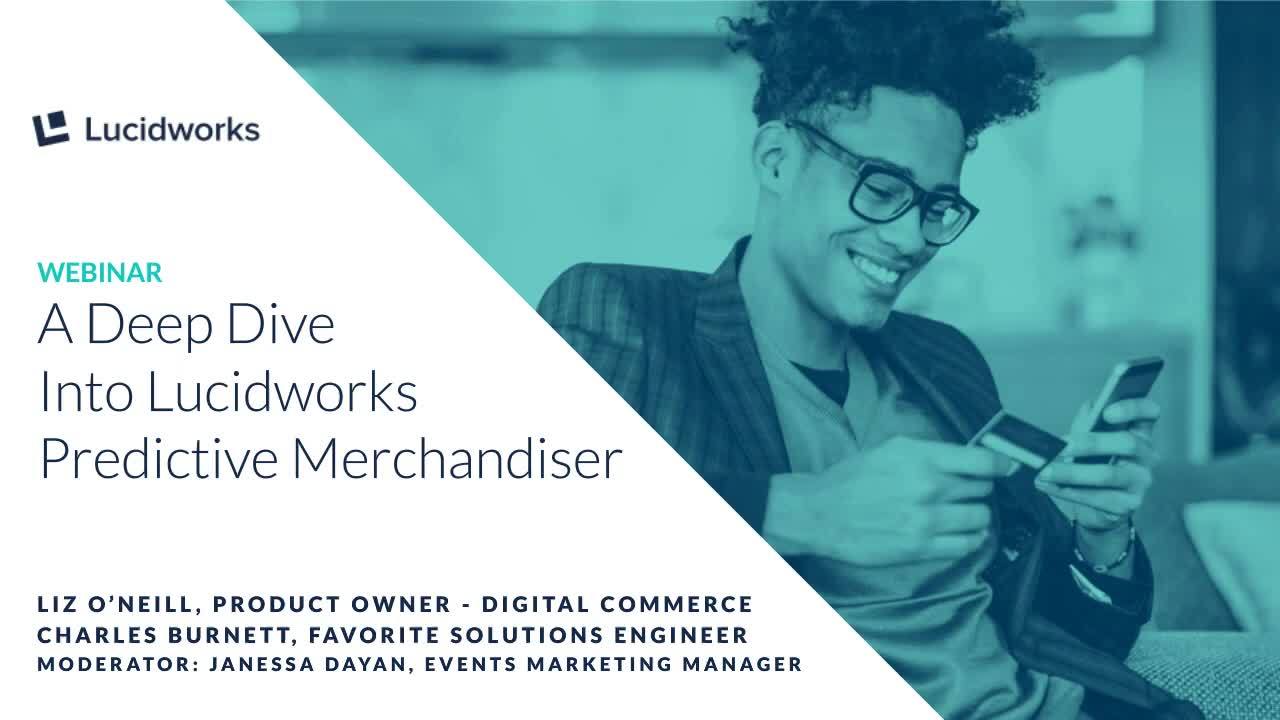Give Merchandisers Control of Landing Pages to Curate Shopper Experience
Predictive Merchandiser includes templating engine to empower merchandisers to curate the customer experience and guide shoppers to the products they want to see.

Landing pages are an essential part of your ecommerce website. Many think that the homepage or the product detail page are the most important to curate, with the goal of increased conversions. The truth is that more and more shoppers are entering ecommerce websites through various landing pages deeper in your site’s hierarchy.
While category landing pages from various sites big and small can seem unique, they tend to use the same common elements with their own styling. Sub-category spotlights can guide users to further refine their product listings. Product spotlights can call out top sellers or high margin items, instinctively telling users that they’ve come to the right place. Related searches can point users to a similar page if the landing page they clicked through wasn’t a good fit.
 |
Here’s an example of different landing pages from our customer, Kuhl. |
Traditionally these examples above–Pants, Shorts, Dresses, Shirts–would be seen as category landing pages, the same page you would browse to if you selected a category facet from the site’s navigation.
Today’s web search behavior demands more than that.
A shopper could do a longer tail search like “stainless steel medicine cabinets” on a homegoods website. While a link to the medicine cabinet category landing page would work for this search, it doesn’t show the shopper what they’re looking for. Instead, it’s better to show the shopper a page with medicine cabinets, but with the “Finish” facet pre-selected to stainless steel.
What about even longer tail web searches? A shopper could be entering your e-commerce website straight to a keyword search results page. All of these are common and valid entry points to your site and all of them should have the capability to act as a landing page.
Landing Pages in Architecture
Crafting an engaging experience for these landing pages requires tools that make it easy to create these pages, as well as to merchandise the products and categories shown. An architecture that emphasizes rich content on these pages by relying on a Web CMS hamstrings the ability of the merchandiser to easily control the products. Likewise a solution that doesn’t allow the merchandiser to select which components show on each page can lead to a bad experience. A region of a page dedicated to top sellers has no place on a page for a brand new product line.
 |
HomeDepot.com’s curated savings banner. |
Having the templating engine for your landing pages separated out from your search and your storefront may seem like a good idea in today’s headless architecture, but it can limit the ability of merchandisers to control their pages like they need to.
Predictive Merchandiser’s Landing Page Capabilities
With the new templating features of Lucidworks Predictive Merchandiser, flexibility and control come together for landing pages. By natively integrating with search, Predictive Merchandiser has access to the latest product catalog and can apply business rules to fine tune the results that show. On landing pages, these results are more than just the browse results; they are the sub-category spotlights, the product spotlights, and any rich content being indexed by Fusion.
 |
More about Landing Page Templates on our Docs site. |
Predictive Merchandiser and its templating capabilities can either act as a primary controller for landing pages or for partial control. In the primary control case, any time a category browse page or search results page renders, the Predictive Merchandiser templating engine is invoked and the front-end or middleware service consumes the data. In the partial control case, the storefront or web CMS calls the templating engine on these pages, but overall controls most of the page, only deferring to Predictive Merchandiser for an inner portion of the page.
In each part of the page controlled by Predictive Merchandiser, you can utilize the out-of-the-box features of merchandising: boosts, buries, pins, and blocks. Boosts allow you to push products to the top of the search results. Buries push results to the end of the result list. Pins allow you to specify the exact position of a product or search result; this can be especially useful in the context of spotlight regions, where AI can drive the spotlighted products/categories, but can be overridden by the merchandiser. Blocks remove the results from the returned set entirely. With these merchandising rules and templating, Predictive Merchandiser can act as the hub for building landing pages on your e-commerce site.

Exceed Customers’ Expectations with AI-Powered Search
Interested in learning more about Lucidworks solutions for digital commerce? Be sure to drop us a line in the form below. And if you want to go deeper on Predictive Merchandiser capabilities and the new templating feature, watch my talk from Activate below.

Best of the Month. Straight to Your Inbox!
Dive into the best content with our monthly Roundup Newsletter!
Each month, we handpick the top stories, insights, and updates to keep you in the know.